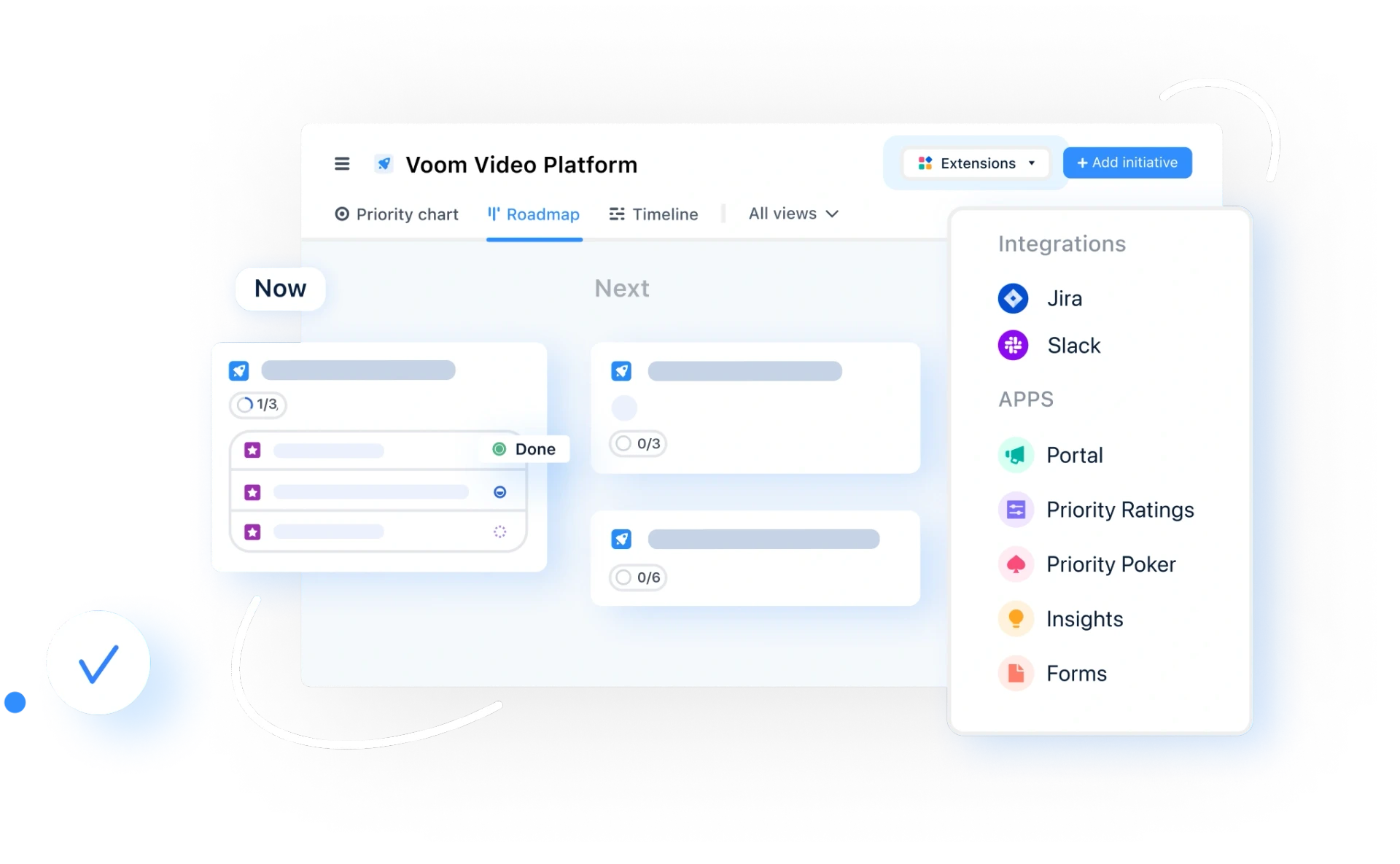Why your sales and CS teams should be in your product feedback loop

When Kirsten Donovan, Customer Success Manager at airfocus, asked a customer exactly who in their organization was using the platform, the answer surprised her. Beyond the expected product managers and developers, their sales and customer success teams had become some of the most active contributors in the tool.
"They told me this was something they hadn't ever considered," Kirsten recalls. "Sales and CS teams don't look at feedback in the same way that PMs do, and there was this vast resource of information they could use."
For many organisations, sales and CS sit just outside the product feedback loop – yet they hold some of the most valuable customer insights. So for product leaders managing complex roadmaps across scaling teams, including them can be an effective way to strengthen product-customer alignment, and build a more insight-driven organization.
The blind spot most product leaders miss
Here's what often happens. Your sales team hears feature requests during discovery calls. Your CS team logs concerns in Salesforce or HubSpot. Meanwhile, your product managers pull this feedback into their prioritisation frameworks.
The problem? Those frontline teams rarely see the complete picture.
"When I was in CS for six years at previous companies, I didn't use feedback from product," Kirsten admits. "I only used the feedback that was given directly to me. There was probably loads of this rich data that I didn't even think about."
This disconnect hurts both sides. Product managers lose valuable context for better prioritisation decisions. Sales and CS teams operate without visibility into what's being built, limiting their ability to have informed customer conversations.
Sales and CS teams see feedback differently
It's important to note that sales and customer success teams interpret feedback in a fundamentally different way from product managers. They perceive not just what customers want, but why they want it, how urgently they need it, and what they're willing to pay for it.
When you give these teams contributor access in a product management platform, several things happen:
They gain visibility to strengthen customer conversations. Instead of vague promises that "the product team is looking into it", they can see exactly where requests sit and what's being developed.
They discover cross-customer patterns. "There might be other customers not in their portfolio who are reporting the same things," explains Kirsten. "And there might be a good answer around what they wanted to do, which you haven't considered."
They provide context that enriches product decisions. Sales and CS comments add crucial context: which customer segment is asking for this, what revenue is attached to it, or what competitive pressure is driving the request.
How contributor access changes the game
The key to making this collaborative process work is awarding people the right level of access. airfocus’ contributor licence model offers unlimited free users who can view workspaces and items, but whose only editing capability is adding comments.
"Contributors are your unpaid licences," Kirsten explains. "They can view items, they can't edit anything; they can't do anything else apart from comment. And that is free. You can get as many licences as you want."
This removes friction. Product leaders don't worry about budget constraints or accidental changes to roadmaps. Sales and CS teams get the visibility they need without responsibility for maintaining the platform.
For the customer Kirsten referred to earlier, a manufacturing company, this creates a centralized feedback hub spanning product, sales, and customer success. Rather than feedback scattered across Salesforce, Slack, HubSpot, and spreadsheets, everyone references the same data.
In contrast, teams that don't leverage this kind of integration face real risks. Without visibility into the product roadmap and centralized feedback, sales and CS teams can't confidently communicate with customers about what's being built.
In short, when feedback lives in silos, valuable patterns go unnoticed. Customers want to know their feedback matters, so when CS teams can't demonstrate that input is being heard, trust erodes. "The problem is, there's a lack of data backing what they're saying," says Kirsten.
The strategic impact on alignment
For product leaders, bringing sales and CS into product management workflows isn't just about better communication. When these teams have visibility into your roadmap and can contribute to feedback collection, the benefits include:
More insight-driven decision making. Your product prioritization improves because you see not just what customers want, but the full context of why it matters to the business.
Improved customer retention. When CS teams can demonstrate that feedback is being heard and considered, they can strengthen relationships and build trust.
Reduced internal friction. Product managers spend less time chasing down feedback or explaining roadmap decisions. The information lives in one place, accessible to everyone who needs it.
Stronger strategic alignment. When sales can see how customer requests map to your product strategy and OKRs, they become better ambassadors for your product vision rather than just collecting wish lists.
Getting started
If your sales and CS teams aren't already contributors in your product management platform, start by identifying which teams would benefit most from roadmap visibility. Set up contributor access with clear guidelines about what they can see and do.
Most importantly, create a culture where their input is valued – not as pressure to build everything customers ask for, but as useful intelligence that informs insight-driven product decisions.
Your sales and CS teams already talk to your customers every day. The only question is: are you listening to what they’re learning?
Emma-Lily Pendleton
Read also





Create effective product strategy

Experience the new way of doing product management



